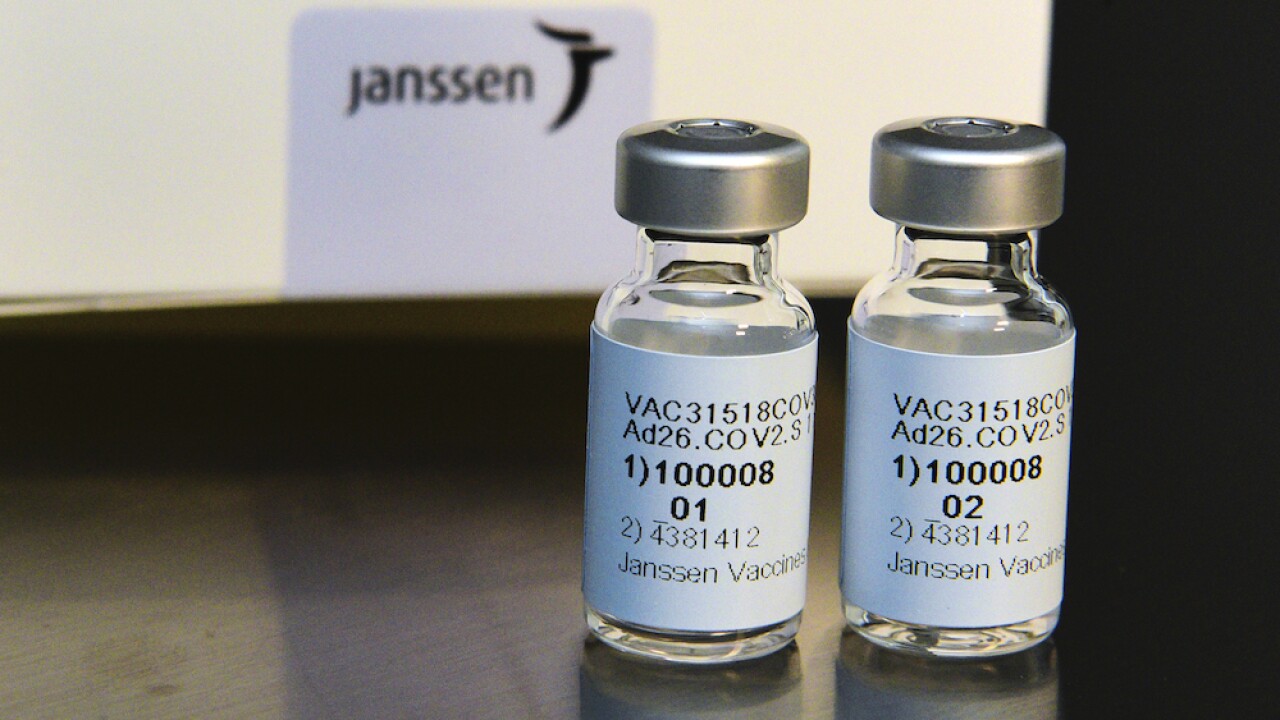SAN DIEGO (KGTV) -- Johnson and Johnson announced it submitted an application Thursday to the Food and Drug Administration seeking emergency authorization for its COVID-19 vaccine.
That means the United States could have its third vaccine sometime next month, followed by two more candidates from Oxford/AstraZeneca and NovaVax that could start distribution this spring.
Clinical trials show the three newcomers and the two authorized vaccines from Pfizer and Moderna are all highly effective at preventing severe disease. No volunteer who received a vaccine in any of the five trials had to be hospitalized for COVID-19 or died from the virus.
“They're all effective,” said Dr. Abisola Olulade of Sharp Rees-Stealy. “I would get any of them whenever they’re available to you.”
However, when it comes to preventing symptoms entirely, different vaccine brands do have different abilities.
Based on early data released by the company, the Johnson and Johnson vaccine is 66 percent effective overall. It was tested in multiple countries and showed a 72 percent efficacy in the U.S. It’s on track to become the world’s first single-dose vaccine.
The Oxford/AstraZeneca vaccine is 76 percent or more effective, depending on how the two doses are spaced out. Results released this month suggest the vaccine reached 82.4 percent efficacy in the U.K. when spaced the doses were spaced three months apart.
NovaVax released data late last month showing its candidate was 89.3 percent effective after two doses in testing conducted in the U.K. The company is still enrolling volunteers in the United States.
RELATED: In-Depth on the Johnson & Johnson vaccine's safety and effectiveness
None of those totals sound as good as the 95 percent efficacy reported by Pfizer and 94.5 percent reported by Moderna, but there’s some important context to keep in mind: Pfizer and Moderna completed their trials before mutations of the virus became widespread in some countries.
Johnson and Johnson and NovaVax, on the other hand, conducted trials in South Africa against the toughest known variant to date.
“It’s very good news that even against the harder and more evasive mutant strains that we’re getting more than 50 percent [efficacy],” said Dr. Christian Ramers of Family Health Centers of San Diego.
Johnson and Johnson said its vaccine was 57 percent effective in testing done in South Africa. NovaVax reported its vaccine was 60 percent effective in that country in a smaller-scale trial of 4,400 volunteers.
RELATED: HOW-TO GUIDE: Finding and scheduling a COVID-19 vaccine appointment
The five vaccines fall into three categories.
Pfizer and Moderna are mRNA vaccines. These use bits of genetic code wrapped in tiny fat bubbles to train the immune system. The genetic code teaches cells in the body to churn out a replica of the spike protein found on the coronavirus. Immune cells then study the shape of that protein and make preparations to encounter the real thing.
Johnson and Johnson and Oxford/AstraZeneca are called viral vector vaccines. These vaccines use a harmless virus called an adenovirus to transport genetic code. The genetic code spurs cells to produce replica spike proteins in a similar fashion.
The NovaVax candidate is called a protein subunit vaccine. Instead of spurring cells into production, the vaccine introduces fake spike proteins from the start that train the immune system.
RELATED: In-Depth: How San Diego's vaccine super site compares to other cities and states
“This is just the protein, not the whole virus, so it can’t replicate. It can’t cause infections,” said Dr. Ramers.
When it comes to side effects, we only have an FDA analysis on Pfizer and Moderna’s vaccines, but early signs suggest the candidates on the horizon can cause similar short-term, mild side effects like fatigue and headache.
The U.K. government reports side effects for the Oxford/AstraZeneca vaccine in somewhat broad estimates. “More than one in ten” people may experience tenderness at the injection site, fatigue, headache or nausea. “Up to one in ten” may experience fever.
Nine percent of the volunteers who got the Johnson and Johnson vaccine reported fever, slightly less than those who got Moderna (14.8 percent) or Pfizer (14.2 percent).
RELATED: How the Moderna and Pfizer vaccines stack up in terms of safety, efficacy
We know less about the side effects from NovaVax but Dr. Olulade doesn’t expect any surprises.
“That technology has been used in other vaccines like Hepatitis B and HPV, so we know that they have similar side effects to the Moderna and Pfizer vaccines,” she said.
NovaVax appears to be the farthest from distribution in the U.S. It’s expected to roll out in a few months.
Oxford/AstraZeneca is expected to be released sometime in April or later.
But Johnson and Johnson, which submitted documents to federal regulators Thursday, could get clearance next month.



